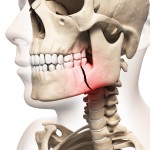
Fractures of the mandible are a common occurrence. Two approaches to treatment of mandibular fractures are; rigid fixation using large titanium plates and bicortical screws that function in a load-bearing manner using Arbeitsge-menschaft fur Osteosynthesefragen (AO) principles or semi-rigid fixation using small titanium plates and monocortical screws that function in a load-sharing manner placed according to Champy principles. The aims of the study were to compare overall treatment charges, operating room time and charges, hardware charges, length of stay (LOS) charges, and the charges associated with treating complications.
Patients with at least one mandibular fracture involving the subcondyle, angle, body, parasymphysis, or symphysis; age 18 to 90 years; no prior surgical treatment of the fracture; absence of infection were eligible. Patients were randomly allocated to the semi-rigid fixation treatment group (2-mm plates placed according to Champy principles; group I) or the rigid fixation group (2.3- or 2.7-mm plates placed according to AO principles; group II). The primary outcome variable was total treatment charges, which included the initial admission and any other admission needed to manage complications. Outcome variables included operating room charges, hardware charges, LOS, LOS charges, and charges for any additional admission to manage complications.
- 72 patients were allocated to the semi-rigid group and 42 to the rigid group.
- 61 patients were lost to follow up 45 from the semi-rigid group and 16 from the rigid group. In addition cost data was not available from 1 other patient in the semi-rigid group leaving 26 patients for analysis in each group.
- Adjusted total treatment charges suggested a significant difference, with a mean total treatment charge of $15,308 in the semi-rigid group and a mean total treatment charge of $16,557 in the rigid group (P = .04). Total treatment charges were 8% higher in the rigid group compared with the semi-rigid group.
The authors concluded
The findings of this study suggest that the overall charges associated with treating mandibular fractures with open reduction and internal fixation are significantly lower when semi-rigid plates are used.
Comment
While this study found a slightly higher overall cost in the rigid compared with the semi-rigid plate system these are some important methodological issues that need to betaken into consideration when assessing the results. The randomisation procedure was based on the timing of surgery with those at the beginning of the week being allocated to the semi-rigid group with all those in the second half of the week being allocated to the rigid group. This is not a robust method of randomisation. In addition there was a 63% drop out in the semi-rigid group compared with 38% in the rigid group. The large differential drop out between the groups and the imbalance of the group sat the outset is likely to have a significant impact on the results.
Links
Bouloux GF, Demo M, Moe J, Easley KA. Mandibular Fractures Treated With Small Plates and Screws Reduce Treatment Cost. J Oral Maxillofac Surg. 2013 Oct 1. doi:pii: S0278-2391(13)01031-8. 10.1016/j.joms.2013.08.005. [Epub ahead of print] PubMed PMID: 24095004.
Nasser M, Pandis N, Fleming PS, Fedorowicz Z, Ellis E, Ali K. Interventions for the management of mandibular fractures. Cochrane Database of Systematic Reviews 2013, Issue 7. Art. No.: CD006087. DOI: 10.1002/14651858.CD006087.pub3.
